Collective Economic Prosperity
Economic prosperity is the cornerstone of a community's well-being, which includes its growth, security, and overall happiness. Strong economic foundations promote community development and regional stability.
Financial security empowers people to lead longer, healthier lives. However, thousands of Tennesseans live in or near poverty, facing limited access to healthcare, nutritious food, and stable housing, leading to preventable diseases, and perpetuating the cycle of poverty. To break this cycle, we can bolster education and workforce development, ensure access to good-paying jobs, and make financial services more readily available. By prioritizing these measures, communities can pave the way towards collective economic prosperity.
When neighborhood economies thrive, they have the resources to invest in important support systems like job programs, parks, and good education and childcare. This helps communities bounce back from tough times and builds a sense of belonging, which is important for everyone's health. However, there's a problem: the cycle of poverty holds people back from financial security.
The poverty cycle is a way to explain how being poor can hurt your health and your ability to get healthcare and jobs. Poor health and not having good job options can make it harder to escape poverty, creating a cycle that's tough to break.
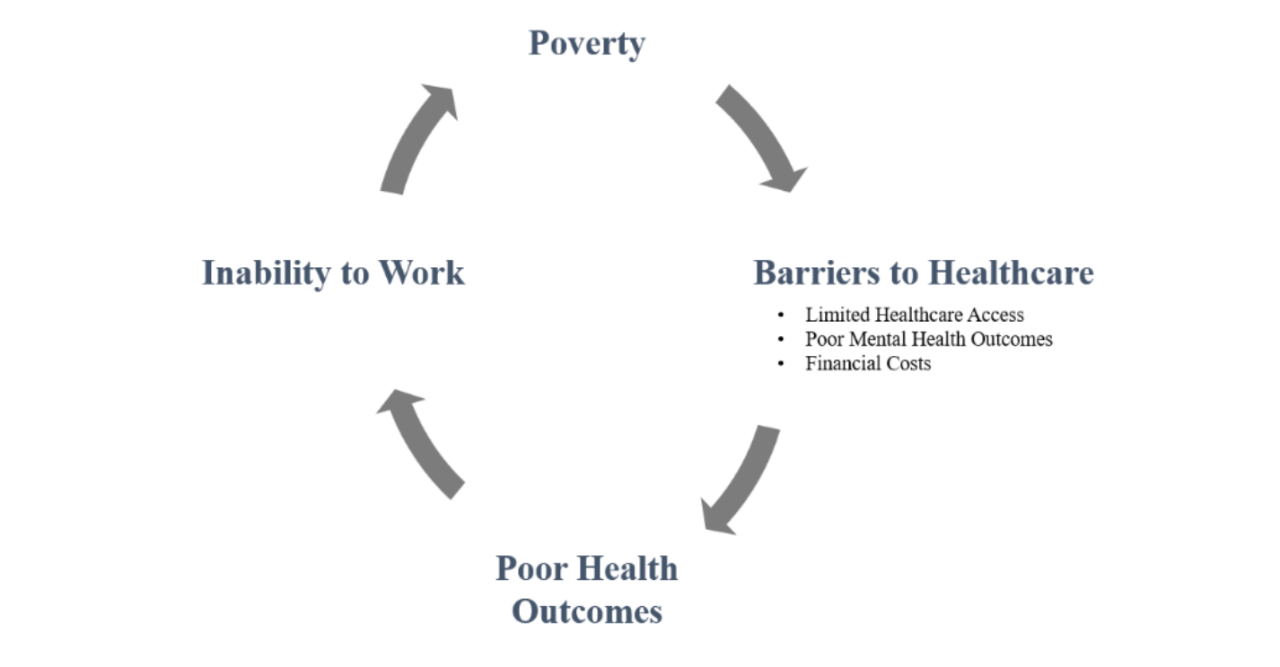
As poverty across a population increases, the opportunity for health decreases. People experiencing poverty are:
- Less likely to have health insurance or have access to primary and specialized care, making health treatment more expensive.
- More likely to delay health care because of the cost, contributing to poor health overall.
- More likely to experience food insecurity, unsafe living environment, and lack of access to safe drinking water, all of which can interfere with health.
Poverty is a risk factor for:
- Depression
- Unhealthy coping behaviors
- Low physical activity
- Diabetes
- Heart disease
- Stroke
- Lower overall health
- Lower life expectancy
Poor health impacts the ability to work. Poor health or disability can keep someone from being able to meet employment criteria, limiting options for stable employment. Many employment options available to people with limited experience or specific health needs may be physically taxing or require a flexible schedule – demands that can be hard to meet for someone balancing health needs and the burden of poverty.
Poverty impacts access to childcare. Tennessee is experiencing a childcare crisis, where the high cost of childcare puts a burden on the financial security of families. When families don’t have the childcare they need, this can limit the parent's opportunity to attend work or education, affecting household financial security and community economic prosperity. The crisis of affordable childcare makes it hard for parents experiencing poverty to stay employed, while driving other families into the poverty cycle just to afford safe and quality care for their young children.
Poverty is expensive for people and for the economy. People in poverty often spend up to 80% of their income on basic needs, limiting resources for saving, paying off debt, or emergencies. Those in poverty often face higher interest rates for loans, higher average prices for groceries, and are more likely to use payday loans. At the societal level, poverty costs the United States millions of dollars in lost productivity, health care expenses, and crime expenses – child poverty alone is estimated to cost the US over $1 trillion.
When we invest in resources to break the poverty cycle, more people can overcome these barriers to achieving health and happiness, supporting overall community well-being.
Economic disparities impact various groups across our communities in different ways.
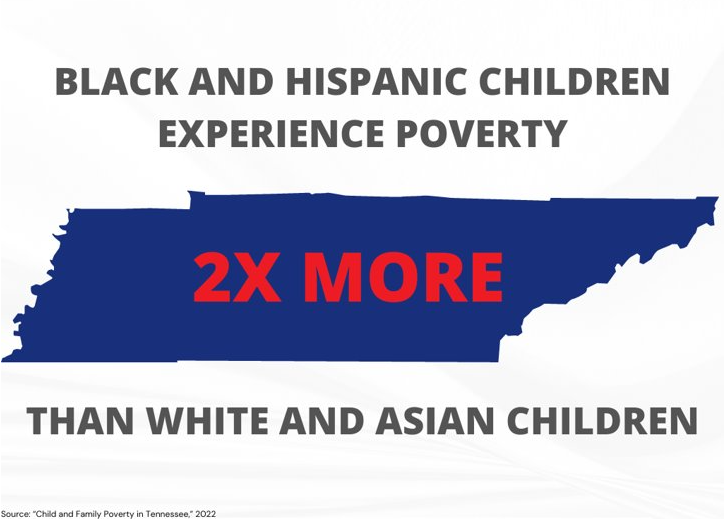
Racial and Ethnic Minorities
Black, Hispanic, and American Indian individuals are over-represented in poverty statistics. The child poverty rate follows suit; Black and Hispanic children are twice as likely to experience poverty compared to white and Asian children.
Educational Achievement
Tennesseans without a high school diploma are considerably more likely to experience poverty compared to individuals with at least a high school diploma or some higher education.
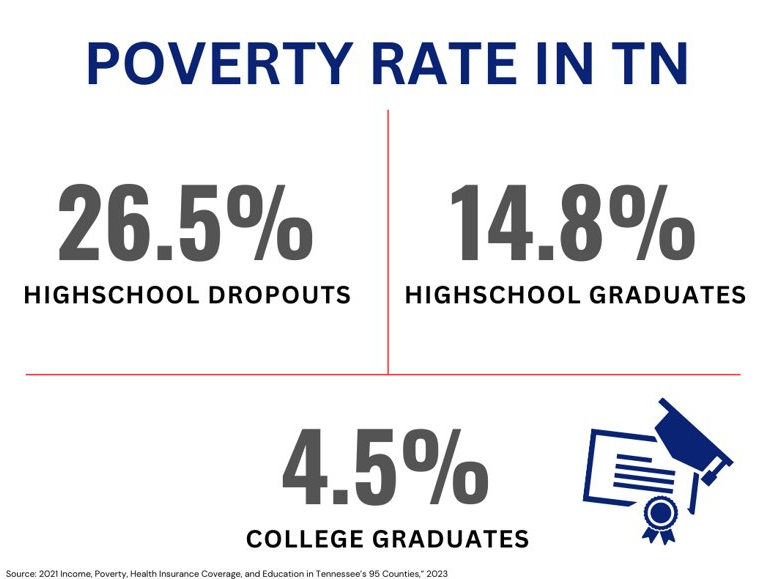
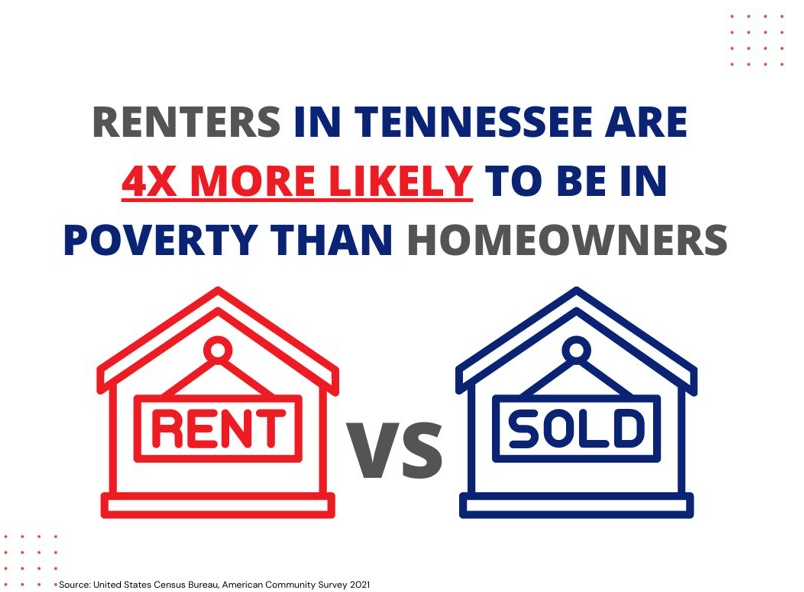
Renters
In Tennessee, the poverty rate for homeowners is 4.9%, compared to 20.8% for renters.
Rural Communities
In Tennessee, rural counties show the lowest incomes and the highest poverty rates compared to urban counties. Rural and mostly rural counties face an overall poverty rate of 16.2-18.4%, compared to 14% in urban counties.
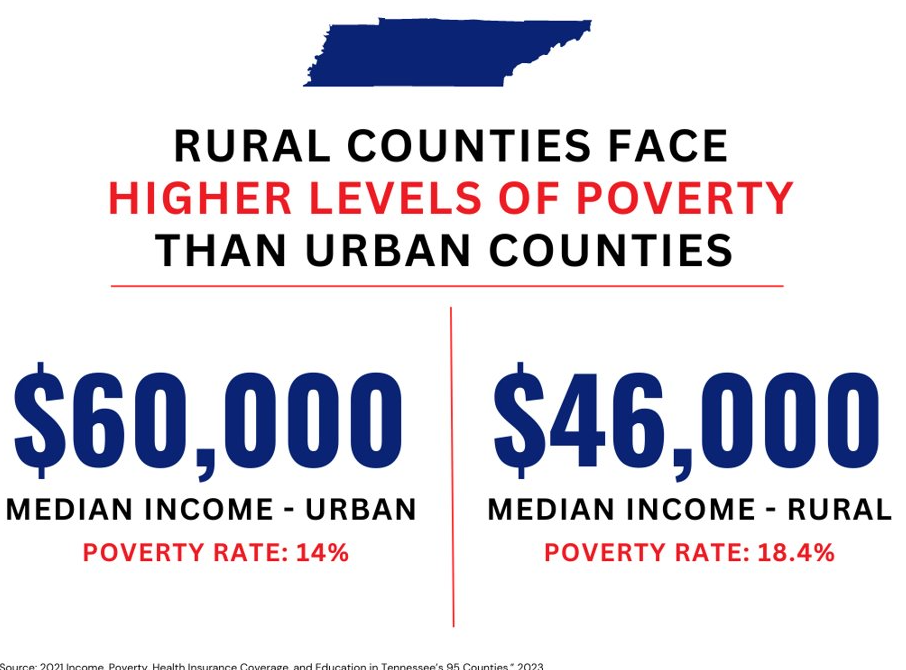
Justice-Involved Individuals
The criminal justice system we have now is like an exceptionally difficult maze, with lots of entrances, but not many exits—and lots of dead ends. When coupled with socioeconomic disadvantage such as lack of education, weak employment record, or history of poverty, this creates a vicious cycle that traps justice-involved people in a cycle of poverty and pulls people in poverty into the justice system at a disproportionate rate.
- A family is 40% more likely to experience poverty if the father has become stuck in the complex maze of the justice system. Previously incarcerated individuals are 50% less likely to receive an interview or job offer compared to identical applications with no criminal record, and when employed, rarely earn more than minimum wage.
- Someone who grew up in the bottom 10% of the income distribution is 20 times more likely to end up in prison than someone in the top 20%.
- The share of people in prison who were previously in poverty is 57% and 72% for men and women respectively, despite an overall federal poverty rate of 11.2%.
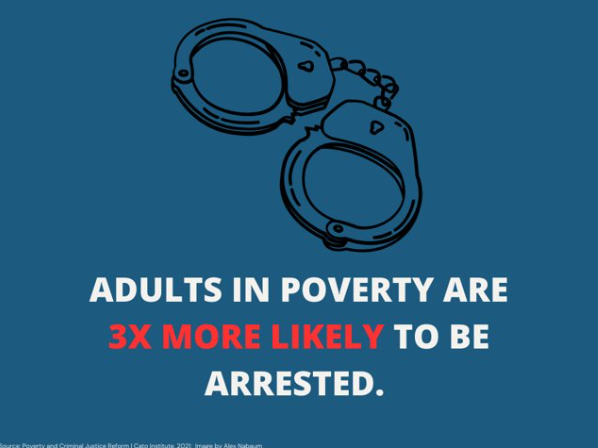
Individuals with Disabilities
In Tennessee, 21.1% of disabled Tennesseans were below 100% of the poverty level, compared to only 10.7% of non-disabled Tennesseans. On average, disabled people make only 74 cents to every dollar for nondisabled peers.
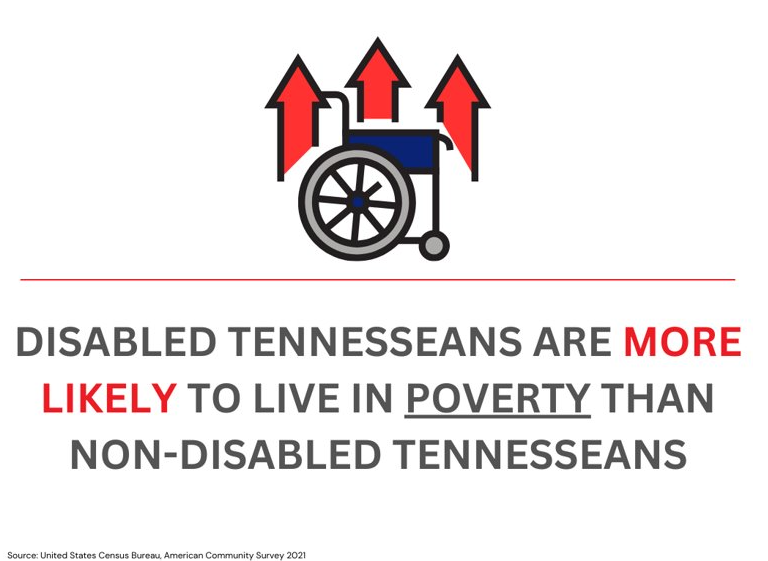
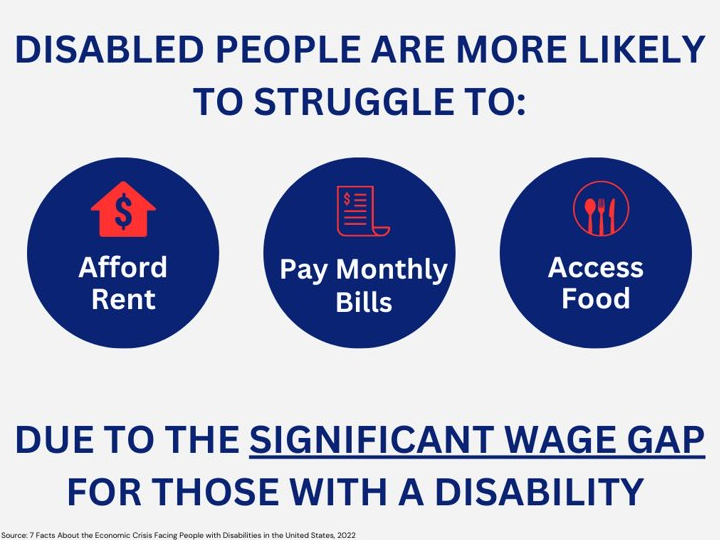
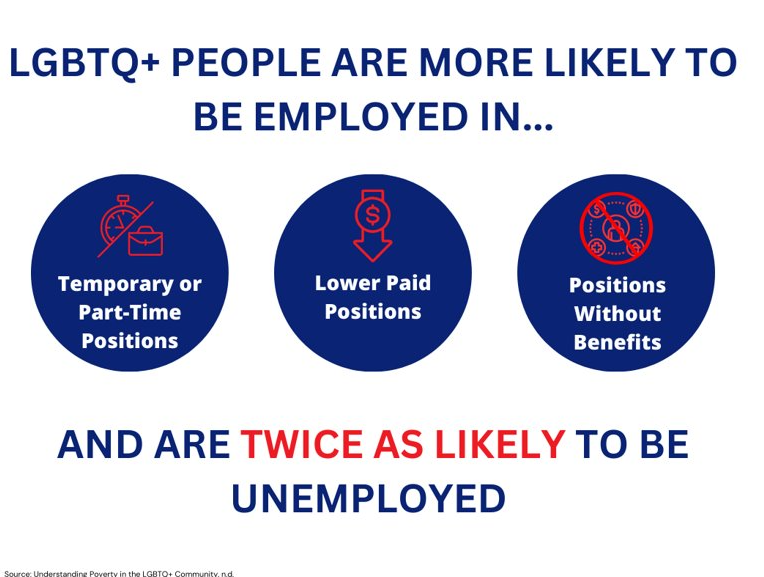
LGBTQ+ Individuals
In 2021, 17% of the LGBTQ+ population were living in poverty, compared to 12% for straight and cisgender people.
Older Individuals
Social security benefits average at just $511/month, representing over 50% of total income for 1/3 of adults over 65. Debt is common among older adults; 61% of households headed by someone age 65 or older had debt in 2016, with the median debt of senior-led households standing at $31,050. In 2017, nearly half of adults nearing retirement age had no personal retirement savings.
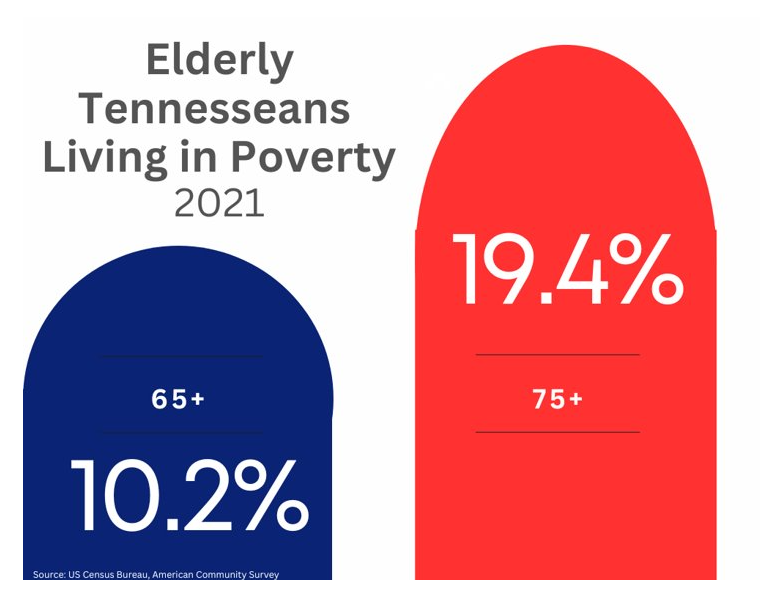
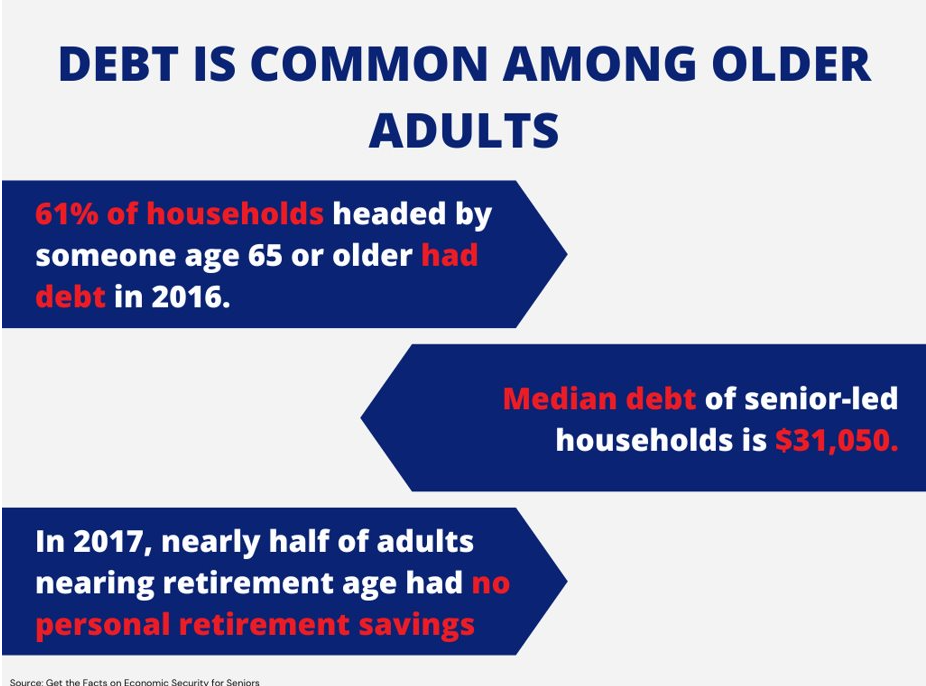
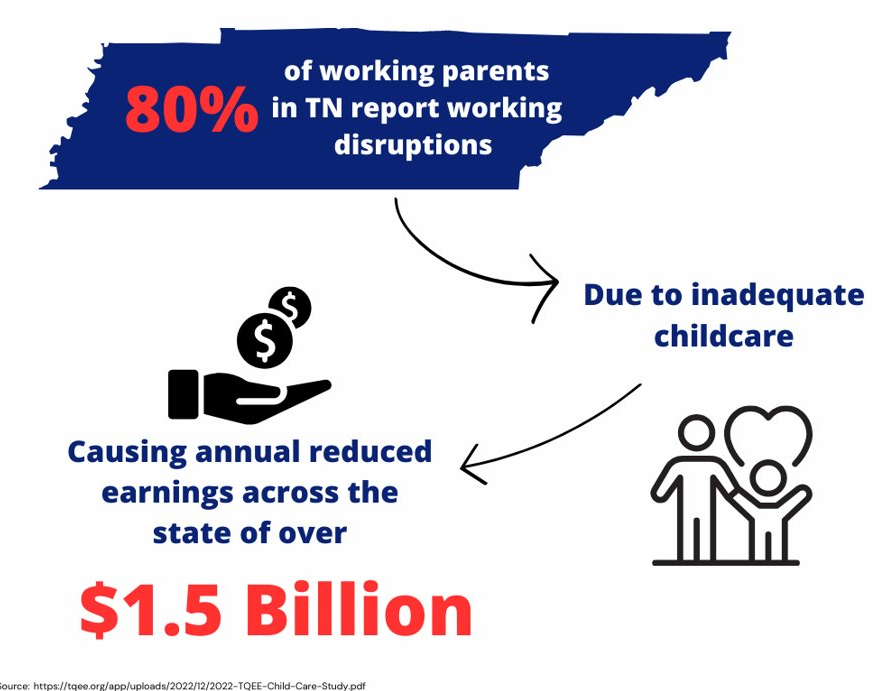
Parents of young children
The ongoing childcare crisis means that families experiencing poverty can pay up to 30% of their total income for high-quality childcare, compared to only 7% for families above 200% of the poverty line. Parents without access to high-quality, affordable childcare may have to use less safe, lower quality care to make ends meet, or may have to choose between work or staying at home with young children. This deepens the cycle of poverty by trapping low-income families into financial insecurity to protect their children's health and development.
Poverty is a complex problem with many pathways to solutions. To foster collective economic prosperity, we can invest in workforce development and improve access to financial resources. These strategies focus on helping people to find and keep stable employment while being supported by resources that improve financial stability.
Activities and Programs: Evidence-informed, actionable, short-term steps that collaborative groups can take to address priority areas.
Policy and Systems Change: Systems change refers to how organizations or programs — such as school systems or health systems — are connected and work together to improve conditions to make change that lasts. This section contains evidence-informed, actionable, long-term steps that collaborative groups can take to address priority areas.
- Promote technical skills training programs to provide workforce training outside of a traditional college track. Pre-apprenticeship programs or other quality training can offer a pathway to a career for individuals in underserved groups. Tennessee offers a variety of technical skills programs, including the Tennessee College of Applied Technology (TCAT).
- Encourage workplaces to adopt trauma-informed practices. Workers are more likely to stay engaged in the workforce when they are employed in a place that promotes physical and emotional safety. A trauma-informed workplace can improve employee mental health, promote increased employee engagement, and lessen employee turnover and days called out, helping people to stay employed over time.
- Help young people to know all their options to finance their future. Normalizing all types of career paths can open new doorways for young people to imagine their future in work. Hosting career events that highlight all paths can support young people to find a path that works for them that might not include going into debt.
- Increase financial inclusion in your community. Financial inclusion means that individuals and businesses have access to the financial resources - such as education, transactions, credit, and insurance – delivered in a responsible and sustainable way. Host a “banking day” that connects local banks and services with community members who are underbanked, or partner with local financial institutions to implement programs that promote financial inclusion.
- Provide courses on financial literacy to groups of all ages, especially teens and young adults, to teach money management as people enter the workforce. While financial literacy alone won’t lift people from poverty, studies show that teaching financial literacy can support individuals to become more economically stable. These courses can be paired with other resources that provide immediate benefit to those facing financial stress.
- Provide access to wraparound supports. People whose basic needs are met are more able to find and keep stable employment. Increasing access to already available services for wraparound support can help people to improve their life conditions such that they are healthy enough to be a part of the workforce.
- Host learning sessions for government benefit programs such as SNAP, WIC, and Medicaid. The administrative burden of access to these resources can be a large barrier to individuals experiencing poverty with limited time or resources. Hosting an event or providing community resources that demystify this process can increase access for families, supporting increased economic stability.
- Support free or sliding scale medical clinics which increase access to healthcare beyond the services available at most health departments. Partnering to promote and expand the reach of these income-based medical clinics can reduce the risk of medical debt and increase access to healthcare for those.
- Promote community “charging stations” for access to needed resources. Community hubs such as public libraries or community centers can offer an environment for people to learn about and access support. By promoting these centers for community support, these charging stations can reach community members with resources such as access to government support or referrals for community health.
- Get involved with your County’s ThreeStar Plan. ThreeStar is a strategic community development program developed to assist communities in preparing for a better future, for today and tomorrow – and for generations to come. Cities and counties that are active participants in the ThreeStar program are eligible to participate in other select TNECD Rural and Community Development programs. There is a grant available for counties to assist in completing one of the identified and submitted community goals.
- Encourage organizations to adopt policies that promote wraparound services specifically for workers, making it easier for workers to stay employed even when facing personal challenges.
- Explore if your community qualifies as an opportunity zone. Opportunity zones are an economic and community development tool that is designed to invest in low-income communities. The OZ program provides tax incentives for investors to offer services or establish businesses in these zones, with a greater benefit for longer community investment. This program can drive businesses into rural or low-income areas, which can decrease financial exclusion and bring in jobs.
- Promote childcare as an integral part of community development. Family-friendly workplaces have a competitive advantage: They attract and retain more top talent, and their employees are more productive and more committed. Plus, family-friendly employers benefit from reduced employee health care costs, a healthier work environment, and fewer employee absences.
Tennessee Department of Economic and Community Development
- Workforce and Education resources support Tennesseans to enroll in technical skills programs and explore options for additional workforce education.
- ThreeStar is a strategic community development program developed to assist communities in preparing for a better future. The ThreeStar program now incorporates asset-based planning initiatives and a two-year timeline to accomplish goals. The asset-based planning component helps communities develop goals to maximize their local assets to drive economic development. Starting in 2019, biennial grants will be available to counties to align with one of the community’s identified goals.
- The Governor’s Investment in Vocational Education (GIVE) Grants are available for collaborations between high schools, industry, and the Tennessee College of Applied Technology (TCAT) to support career pathways in vocational education, including enhancing pathways to postsecondary school, improving work-based learning experiences, or providing industry certifications.
- Opportunity Zones are regions in Tennessee where there are financial incentives for economic, community, and workforce development in that area. When a business invests in these low-income areas, they receive tax benefits while the community benefits from new opportunities and jobs.
- The Tennessee Promise offers a program where Tennessee residents who graduate from an eligible high school can receive an award toward their higher education at many Tennessee colleges and universities. This program can subsidize the cost of higher education for those who may not be able to afford it otherwise.
- Tennessee Reconnect is a program designed to support Tennesseans to earn a postsecondary degree (such as an associate’s degree or a certificate through TCAT) free of tuition and fees. The program is available for all eligible adults regardless of age.
Tennessee Department of Human Services
- Families First, Tennessee’s Temporary Assistance for Needy Families Program (TANF) is a workforce development and employment program that provides temporary cash assistance, transportation, child care, education, and job training to help families get back into the labor force.
- Smart Steps Childcare Assistance Program is available to income-eligible working parents and parents pursuing post-secondary educational goals that have children ages six (6) weeks to kindergarten. Families that participate in Smart Steps are responsible for a portion of their child care costs or co-pay based on a sliding income scale. As part of the program, children will be enrolled in quality, affordable, child care facilities and the Imagination Library.
- Supplemental Nutrition Assistance Program (SNAP) is a nutritional assistance initiative that provides a grocery stipend to qualifying households for a set length of time. Enrolling families in SNAP can support families to meet their basic nutrition needs so they can focus on work, school, and family wellness.
- Community Tennessee Rehabilitation Centers (CTRCs) are a network of 17 facilities throughout the state which provide vocational evaluation, work adjustment and job placement in local communities. Services provide an essential role in preparing and placing disabled Tennesseans into the labor market.
Tennessee Department of the Treasury
- The Tennessee Financial Literacy Commission provides financial education resources for Tennesseans of all ages, with a particular emphasis on reaching students at a young age by supporting financial literacy education in elementary and middle school classrooms.
- Enrich is a free financial education tool provided by the Tennessee Financial Literacy Commission that provides a platform to strengthen financial wellness.
Tennessee Department of Health
- Women, Infants, and Children Program (WIC) provides access to nutrition assistance, nutrition education, breastfeeding education and support, and healthcare referrals for mothers of young children, helping to meet basic needs during a transition period for a household.
- Community Health Access and Navigation in Tennessee (CHANT) provides care coordination through local health departments. Eligible individuals are connected to resources and support for their health and medical needs, such as reimbursement or assistance with co-pays. CHANT can help individuals to access medical care to improve their health who may otherwise not be able to afford it.
Tennessee Housing and Development Agency
- The Tennessee Weatherization Assistance Program is designed to assist low-income households in reducing heating and cooling costs for low-income families, particularly for the elderly, people with disabilities, and children, by improving the energy efficiency of their homes while ensuring their health and safety. This helps to reduce energy costs for low-income households.
- The Low-Income Home Energy Assistance Program is a federal program designed to assist households below 150% of the federal poverty standards of low income, particularly those who pay a high proportion of household income for home energy bills, meet their immediate home energy needs. The funds are awarded to a network of 19 community service agencies serving all 95 counties in Tennessee.
- The Family Self-Sufficiency (FSS) Program works with families to create a step-by-step plan that leads to economic independence. The purpose of FSS is to facilitate access to the supportive services families need to become free of public assistance in a five-year time period. All participating Section 8 families are eligible to participate.
Tennessee College of Applied Technology
- Tennessee College of Applied Technology is the key workforce development organization to train students in technical skills for the workforce. TCAT offers a variety of programs in various fields to prepare students for success careers.
U.S. Department of Labor
- The US Employment and Training Administration offers workforce development resources to support recruitment and retention of all.
U.S. Department of Agriculture
- Resources on Rural Poverty provide data and charts to learn more about poverty in rural areas.
